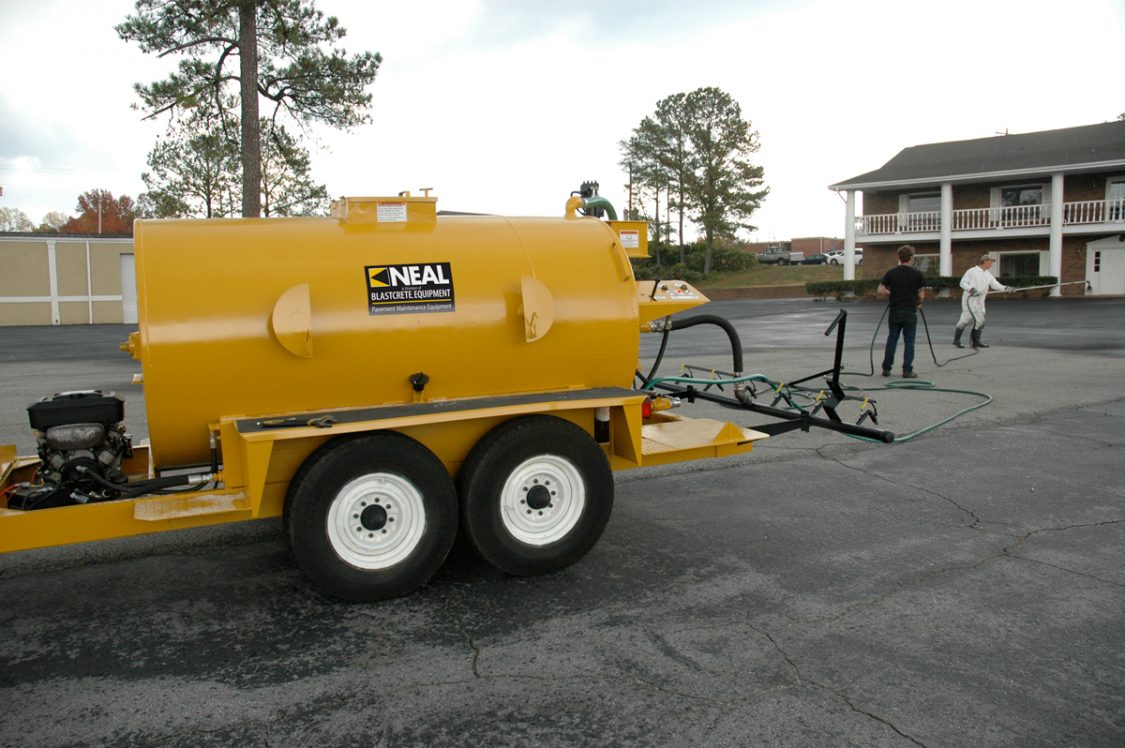Winter weather can wreak havoc on equipment, but not if it’s properly protected. Winterizing and prepping your sealcoating equipment for storage is essential for a fast start in the spring. Here are a few steps you can take before cold weather hits to ensure you’ll be up and running quickly when warmer temperatures roll back around.
Empty Sealer
When the season ends, be sure to save your leftover blacktop sealer for the next season by keeping it in tightly sealed drums or totes. Consider using a biocide or bleach to help keep the sealer free of bacteria that could ruin it. Sealer must be kept above freezing temperatures. Once frozen, it is no longer useable.
Flush and Drain
Dried sealer can build up in pumps, meters and hoses. The material can freeze during winter and potentially cause the pipes/filters to break. Flush well with water to remove built-up sealer.
Drain and Open Valves
After the plumbing is clean, open all valves. Leave them open over winter to drain any remaining water left in valve. It can appear like all the water has drained from the plumbing, but water can collect in the valves in storage, causing damage if it freezes.
Remove Dried Sealer from Inside Sealcoat Tank
Dried sealer will accumulate on the inside walls of the sealcoating tank over time. If not removed during the winter, it can cause significant damage come spring. The sealer on the inside of the tank freezes and becomes brittle when the tank is stored in freezing temperatures for a sustained period, making it easy to remove buildup. However, if overlooked, it will fall off of the walls of the tank when the unit is put back in service in the spring, potentially clogging plumbing and filters.
Suck Oil into the Material Pump
Sucking new or used motor oil into the pump prior to storage will prevent the leather seals from drying out and the pump housing from rusting.
Remove Spray Wand Hoses
Remove the spray wand hose from your sealcoat machine and store them in a warm place. Spray wands left in colder temperatures work less efficiently come spring and can even break.
Ask the Experts
Sealcoating equipment manufacturers like Neal Manufacturing understand the importance of winterizing your equipment. That’s why we include instructions for ending the season in the instruction manual for each piece of sealcoating equipment. Of course, we also understand that sometimes these instructions get misplaced during the hustle and bustle of the work season. If this is the case, or if you have any questions about proper winterizing for your specific sealcoat machine or geographic region, feel free to contact us. If temperatures are forecast to fall below freezing, move the machine and sealer to a heated storage area prior to the end of the season and before winterizing.
These steps don’t take long, but they can make a big difference when it’s time to start operations in the spring. Ending the season with proper winterizing of your sealcoating equipment saves the expense of labor and repair parts — and prevents headaches in the spring.


